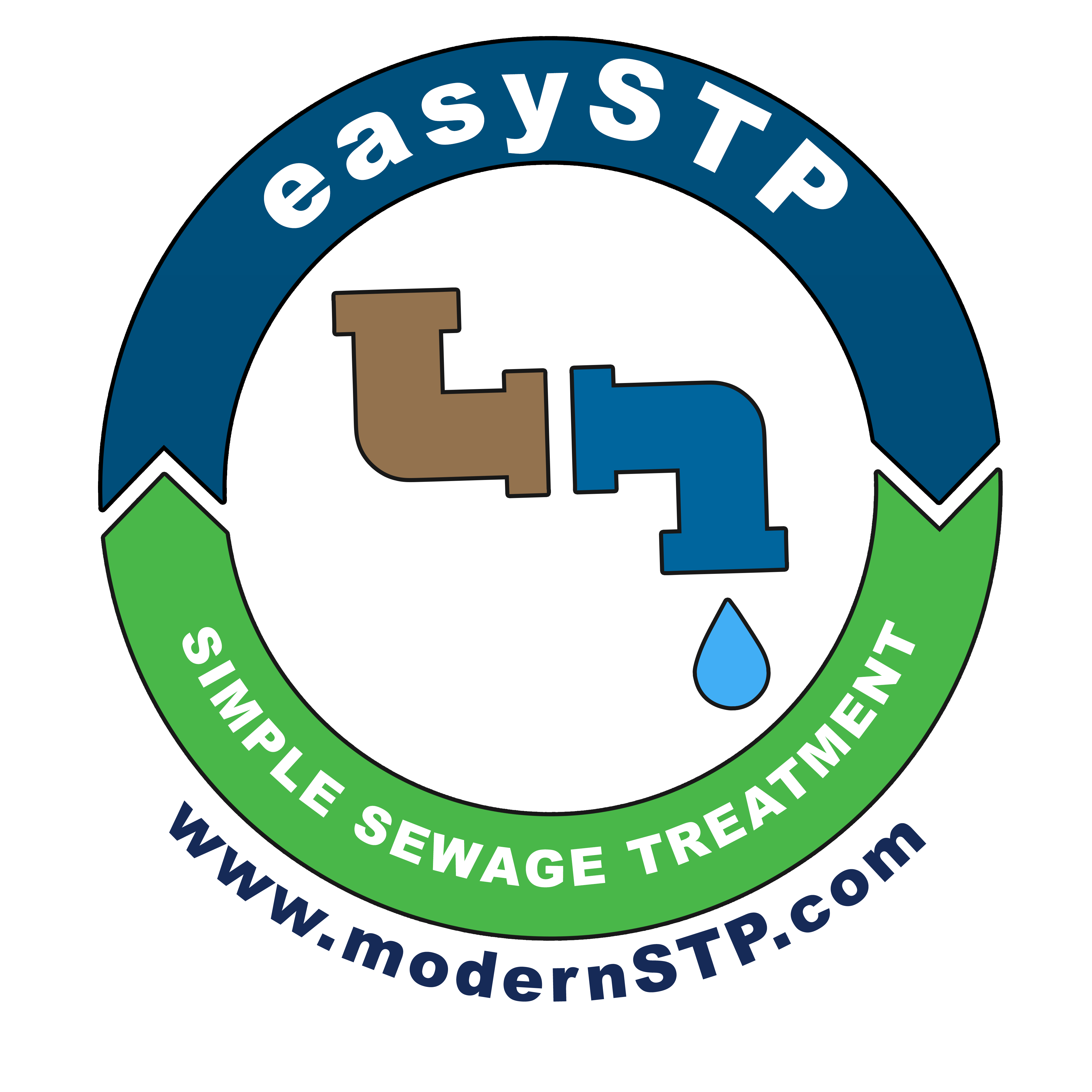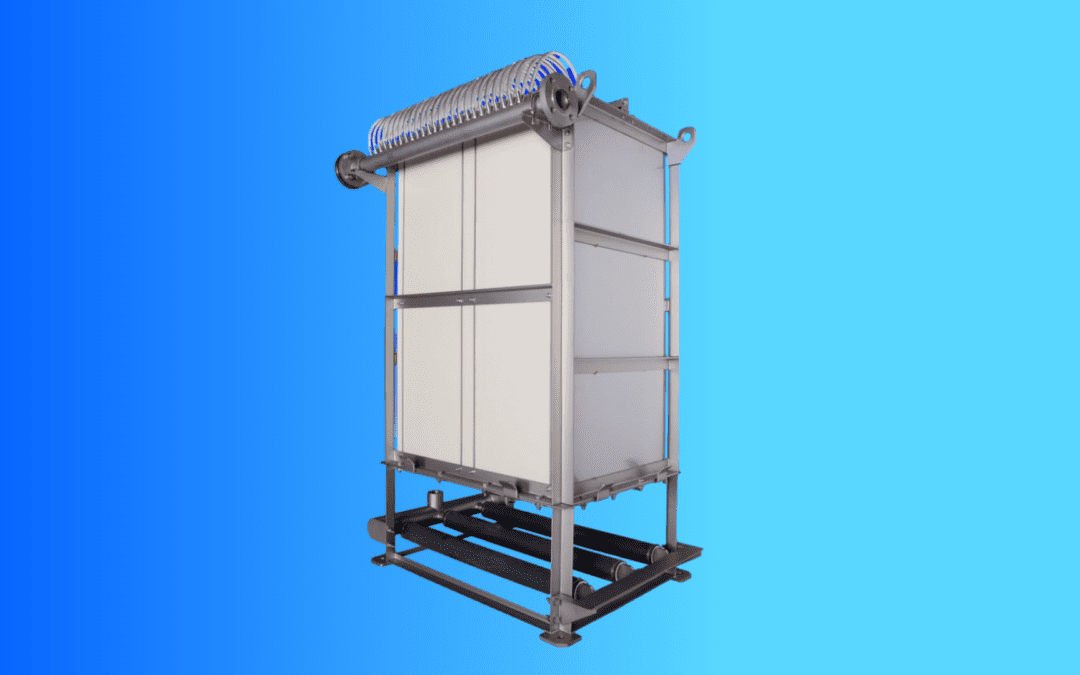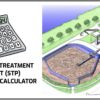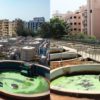Membrane Bio Reactor
🌊💧🚽💻🏭Are you curious about the latest technology in sewage treatment plants? Look no further than the Membrane Bio Reactor Sewage Treatment Plant! This innovative system uses cutting-edge membrane technology to efficiently and effectively treat wastewater. But what exactly is a Membrane Bio Reactor? Stay tuned to find out! 🤔👀
Table of Contents
What is Membrane Bio Reactor?
Membrane Bio Reactor (MBR) is an advanced technology used for wastewater treatment that combines biological treatment with membrane filtration. This process becoming popular due to its high efficiency, low maintenance requirements, and smaller footprint compared to conventional wastewater treatment plants.
In a traditional sewage treatment methods, biological process and settling are separate processes requiring separate tanks whereas MBR integrates these two processes into one system and one tank. The biological treatment process involves the use of microorganisms to break down organic matter in the wastewater, which is then separated from the treated water using a membrane filtration system. The biological process used in MBR is the same as that of Moving Bed Bio Reactor (MBBR). It is an aeration system and anoxic zone added to it.
The membrane filtration system is made up of a series of hollow fiber membranes, which have small pore sizes that allow only purified water to pass through. The microorganisms are retained by the membrane and recycled back into the biological treatment process, ensuring a consistent and high-quality treatment process.
Types of MBR
There are two types of MBR systems: submerged and side-stream. Submerged MBR systems have the membranes placed directly in the mixed liquor of the bioreactor, while in the side-stream MBR systems, the membranes are placed outside the bioreactor and are fed with a side-stream of mixed liquor.
MBR systems have many benefits over traditional wastewater treatment systems. They offer a smaller footprint, produce a high-quality effluent, and require less sludge disposal. The high-quality effluent produced by MBR systems can be reused for non-potable applications such as irrigation, landscaping, and toilet flushing, thereby conserving fresh water resources.
Moreover, MBR systems can easily accommodate fluctuations in wastewater flows and loadings. They can also handle shock loads and peak flows without compromising on the quality of the treated water. MBR systems also have a low operating cost, as they require minimal chemicals and energy for operation.
Biological Nutrient Reduction (BNR)
BNR is the process of removing excess nutrients, mainly nitrogen and phosphorus, from wastewater to prevent eutrophication, which can lead to harmful algal blooms and other negative impacts on aquatic ecosystems.
MBR systems have a high sludge retention time, which allows for the development of a diverse microbial community that can effectively remove nutrients from the wastewater. The biological treatment process in MBR systems involves the use of aerobic and anoxic conditions to promote the growth of specific bacteria that can convert nitrogenous and phosphorus compounds into forms that can be removed by the membrane filtration process.
In addition, MBR systems can be designed with specific configurations and operating parameters to promote nutrient removal. For example, anoxic zones can be incorporated into the bioreactor to facilitate denitrification, a process where bacteria convert nitrate into nitrogen gas, which can be released into the atmosphere. Similarly, phosphorus removal can be enhanced by incorporating chemical precipitation or biological processes such as enhanced biological phosphorus removal (EBPR).
In conclusion, Membrane Bio Reactor (MBR) is an advanced wastewater treatment technology that combines biological treatment and membrane filtration to produce high-quality effluent with a smaller footprint and lower operating costs. The MBR system is a sustainable solution that can help in conserving fresh water resources and managing wastewater effectively.
MAJOR ADVANTAGES OF MBR STP
Major benefits of MBR Sewage Treatment Plant over conentional process like MBBR / SBR:
- High-quality effluent: MBR technology produces a high-quality effluent with a low level of suspended solids, bacteria, and other contaminants. The treated water can be reused for non-potable applications, such as irrigation and toilet flushing, or discharged to sensitive environments without causing harm.
- Small footprint: MBR systems have a smaller footprint compared to conventional wastewater treatment plants, which makes them suitable for locations with limited space. MBR technology also offers flexibility in plant design and construction, making it ideal for retrofitting existing facilities.
- Reduced sludge production: MBR technology can reduce sludge production by up to 90% compared to conventional wastewater treatment plants, resulting in lower disposal costs and environmental impact. The sludge produced by MBR systems is also highly stabilized and can be used for various beneficial applications, such as fertilizer and energy generation.
- Robustness and reliability: MBR technology is highly robust and can handle variations in wastewater flow and quality, as well as shock loads and peak flows, without compromising on treatment performance. MBR systems also require minimal operator intervention and have a low failure rate, resulting in high reliability.
- BNR: Biological Nutrient Reduction is essential to meet the present and future Pollution Control Board norms in India. Treated water from MBR plants will confirm to the latest and proposed standards of Ammonia, Phosphate etc.
MBR has some drawbacks also.
1. High capital costs: MBR systems generally have higher capital costs compared to conventional wastewater treatment plants, mainly due to the cost of the membrane filtration system and associated equipment.
2. Membrane fouling: Membrane fouling is a common problem in MBR systems, where the membranes become clogged with biomass, organic matter, and other contaminants, reducing their filtration capacity. Membrane fouling can lead to reduced treatment efficiency and higher operating costs due to the need for more frequent membrane cleaning and replacement.
3. Energy consumption: MBR systems require higher energy to power the aeration and membrane filtration systems that work on creating a partial vacuum, there by increasing power and operational cost.
4. Chemical requirements: MBR systems will require chemical dosing for pH adjustment, nutrient removal, or membrane cleaning, which can add to the operational cost and environmental impact.
5. Maintenance requirements: MBR systems require regular maintenance to ensure optimal performance, including membrane cleaning, sludge removal, and equipment maintenance.
6. Space requirements: Although MBR systems have a smaller footprint compared to conventional wastewater treatment plants, they still require a significant amount of space for the bioreactor and membrane filtration system.
7. Limited vendors of Membranes: Submerged MBR technology is still evolving. There are limited number of vendors world over. Most of them are charging a premium on membranes. There is no standardisation of design and operational parameters. If you use a particular brand of membrane, you have to use the same even while replacing.
TO BUY OR NOT TO BUY MBR STP!
Here is my personal recommendation!
If you have water shortage and need to re-use treated water, the operating cost is no longer an issue. You have to embrace MBR if you want high quality water.
If you generate small volume (less than 100 KLD) you should stay away from MBR as the maintenance cost will be too high for your comfort.







